Free Manchester
Places You Can Visit Around Manchester, England For Free

A while ago, I bumped into two Dutch tourists at Piccadilly train station. They were just leaving, having spent two days in the city and they weren’t happy. “There’s nothing to see!” they complained, at which point I reeled off a list of places they could have visited but unfortunately, by the time I was talking to them, it was all too late. This guide is to help you to know where to go when visiting the city, so that your time in Manchester is filled with so many places to visit, you will have to come back for another go.
Manchester Free Buses

There are many buses and trams which you can travel on to get around Manchester, but for the visitor, Route 1, 2 and 3 buses, which are free, should get you to most of the places mentioned in this guide. You can ‘hop on’ and ‘hop off’ wherever you like and as I said before, these buses are free. Information available at:
Tourist Information Centre –
Manchester Central Library, St. Peter's Square, M2 5PD (Route 2, Peter Street)
https://www.visitmanchester.com/visitor-information/manchester-visitor-information-centre-p23991
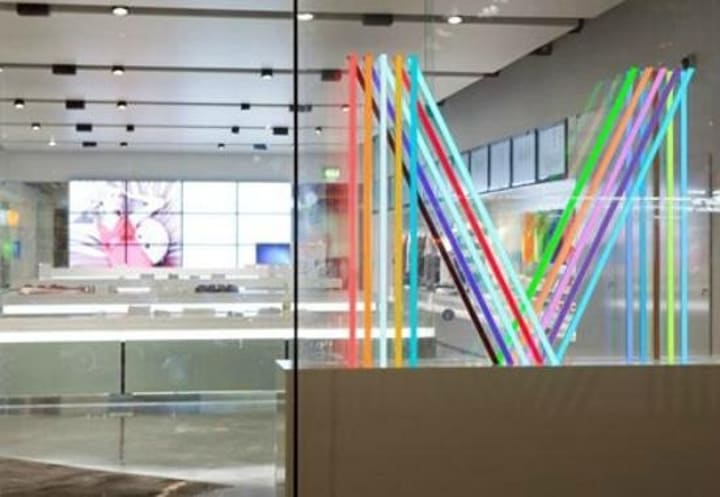
This guide will give you a good overall guide of where to go but the tourist information centre will give you up-to-the-minute information, including any up-coming live events, concerts and theatre which may be going on in the city.
Manchester Central Library -
St. Peter's Square, M2 5PD (Route 2, Peter Street) https://www.manchester.gov.uk/directory_record/433614/central_library

The Central Library in Manchester is a rotunda domed structure, loosely based on the Pantheon in Rome. Within, there is a main reading room (picture below, worth a look), a theatre and a café. It is also worth going up to the top floor of the building and looking down on the central doom from above.

Manchester Art Gallery –
Mosley St, M2 3JL (Route 1, Charlotte Street) https://manchesterartgallery.org/

Just across St. Peter’s Square from the Central Library is Manchester Art Gallery. Formerly Manchester City Art Gallery, it is a publicly owned and free museum of art. The main gallery premises were built in 1823 and today its collection occupies three connected buildings, two of which were designed by Sir Charles Barry. Highly recommended are the hands-on, interactive displays, which my son loved when he was young (lots of dressing up required).

Manchester Town Hall –
Albert Square, Manchester M2 5DB (Route 1 or 3, John Dalton Street) https://www.manchester.gov.uk/info/500323/town_hall/7285/history_of_manchester_town_hall

Behind and now connected to the Central Library by a very impressive, new internal corridor, Manchester Town Hall is an imposing Gothic building built in the 1870s. It has an interesting café downstairs and if they are not in use, amazing function rooms upstairs. If possible, take a look at the murals by Ford Madox Brown.

John Rylands Library –
150 Deansgate, M3 3EH (Route 1,2 and 3, Deansgate) https://www.library.manchester.ac.uk/rylands/

The John Rylands Research Library, built from red sandstone blocks, looks completely different to every other building on Deansgate. It is a late-Victorian, neo-Gothic library, which opened to the public in 1900. It was founded by Enriqueta Augustina Rylands, in memory of her husband, John Rylands and its interior and museum are small but beautifully formed.

The People’s Museum –
Left Bank, Manchester M3 3ER (Route 1, Bridge Street) https://phm.org.uk/

Round the corner from the John Rylands library, on Bridge Street, on the bank of the River Irwell, is the The People’s Museum. In 1819, Manchester was the centre of rallies, calling for democratic reforms and every man to have the vote. The gathering was violently supressed, in what became known as the Peterloo Massacre. It is therefore only fitting that Manchester should be home to this national museum, telling the history of the fight for democracy. A very hands on museum, excellent for children and, due to its location, never overly busy.

Museum Of Science And Industry –
Liverpool Rd, M3 4FP (Route 1, Quay Street (Byrom Street on a Saturday)) https://www.scienceandindustrymuseum.org.uk/

Manchester was at the forefront of the industrial revolution. As the area industrialised, Manchester turned from a small town into a huge, mechanised city with hundreds of mills turning cotton into cloth for the entire world. The Museum Of Science And Industry (locally known as MOSI) is a full-day of interesting objects to explore, knowledge to consume and hands on exhibits to play with. Extremely entertaining for children, old and new.

National Football Museum –
Todd St, M4 3BG (Route 2 and 3, Victoria Station Approach) https://www.nationalfootballmuseum.com/plan-your-visit/
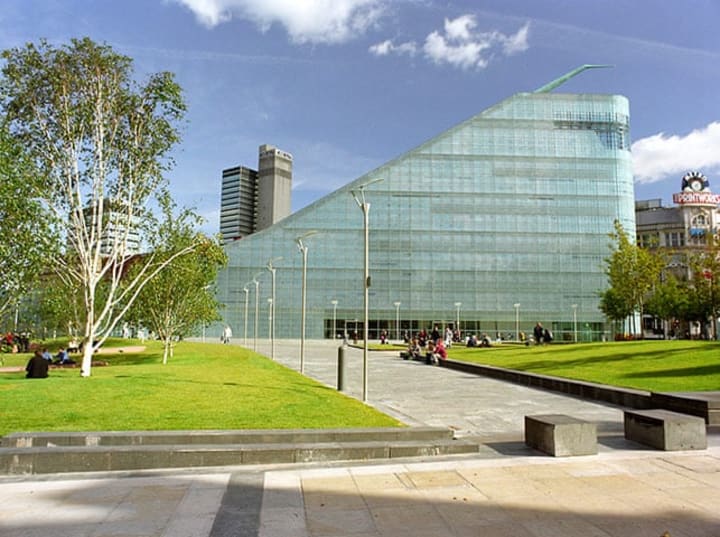
Based in the unique, wedge-shaped glass Urbis building, the National Football Museum contains a huge amount of football memorabilia, mainly concerning English clubs but also about other clubs around the world. It used to be free and is still free to Manchester residents, but I have just discovered, while putting this guide together, that there is now charge for non-Manchester residents.

Cheetham’s Library
Cheetham’s School of Music, Todd St, M4 3BG (Route 2 and 3, Victoria Station Approach)

Cheetham’s library is housed in a building on the site of Cheetham’s School of Music, which sits on the opposite side of the Cathedral Gardens from the National Football Museum. This is another one of the original ‘free’ places to visit but you now have to pay for a guided tour. However, it is well worth it to visit the oldest public library in Britain (founded in 1653) which contains the room where Karl Marx met Josef Engels when he visited Manchester.

Manchester Cathedral and Cathedral Visitors Centre
Victoria St, M3 1SX (Route 2 and 3, Victoria Station Approach)
https://www.manchestercathedral.org/
https://www.manchestercathedralvisitorcentre.org/
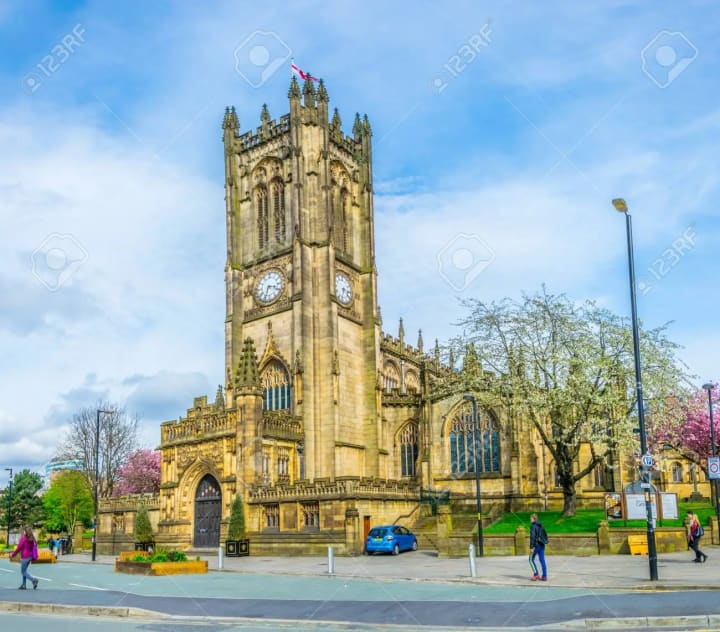
The cathedral is beautiful inside and is open for a variety of different events throughout the work, so it is always worth checking the calendar on the website for the opening times. Always open, however, is the Visitors Centre, based around the corner on Cateaton Street. Another small but perfectly formed museum, it gives a potted-history of Manchester and the cathedral.

Royal Exchange
St Anne’s Square, (Routes 1 and 3, Market Street)
https://www.royalexchange.co.uk/

The Royal Exchange was built in 1867 as a commodities exchange, mainly for cotton and textiles. Today, it contains a very futuristic looking ‘theatre in the round’, though there is also a café so it is perfectly possible to step inside, buy a drink and sit back and admire the perfectly maintained interior of this lavish building.

There are further free places to visit in Manchester.
Chinatown (Route 1, Charlotte Street) is full of colour, especially at Chinese New Year, and is full of wonderful places to eat.
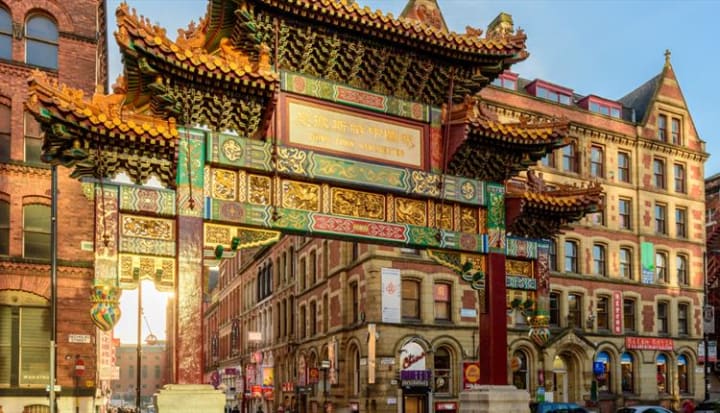
There is also the Centre for Chinese Contemporary Art (Route 2 and 3, High Street, https://cfcca.org.uk/) which is an amazing space to showcase contemporary Chinese art.

The Manchester Craft and Design Centre (17 Oak St, M4 5JD, Route 2 and 3, High Street) is an incredible building full of unique, boutique shops and stalls.

Just round the corner on Newton Street is the Greater Manchester Police Museum (57A Newton Road, M1 1ET, Route 1 and 3, Piccadilly, https://gmpmuseum.co.uk/). A tour needs to be booked for a group of 5 to 25 but it is still free, though they appreciate a donation or two.

There are many others, which I may edit into this article at a further date. There are also a number of excellent places to visit a little further out of Manchester city centre, but I will put this in a separate article (Free Manchester 2 – Further Out).
I will finish this article with somewhere magical which is both free and poignant. The Alan Turing Memorial, situated in Sackville Park (Fairfield St, M1 3HB, Route 1, Chorlton Street) is a sculpture of Alan Turing, a pioneer of modern computing and one of the team that cracked the Enigma code during World War 2. Turing is believed to have committed suicide in 1954 two years after being convicted of gross indecency. He has become a gay icon, and the memorial is situated near to Canal Street, Manchester's gay village. Turing is depicted sitting on a bench, in a central position in the park. On Turing's left is the University of Manchester (where he worked) and on his right is Canal Street.
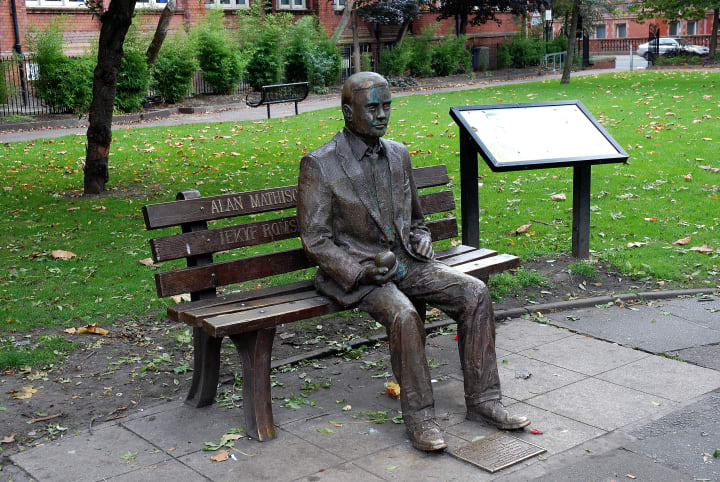
Thank you for reading the guide to the end and I hope it helps you to discover parts of Manchester which you haven’t possibly visited before. Enjoy!
About the Creator
Niall James Bradley
I am a teacher who lives in the north west of England. I write about many subjects, but mainly I write non-fiction about things that interest me, fiction about what comes into my head and poetry about how I feel.






Comments
There are no comments for this story
Be the first to respond and start the conversation.